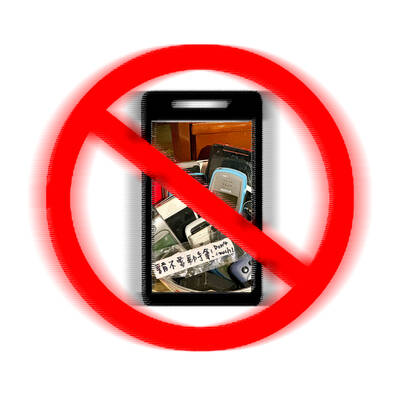Skinny models, clothes designed for unrealistic body shapes and pressures at work are all fuelling an increase in eating disorders and body anxiety, as well as a rise in demand for cosmetic surgery. For men. Fat is no longer just a feminist issue, since the number of men suffering problems with food and body image is rising fast, with experts suggesting that 40 percent of binge eaters and a quarter of anorexia and bulimia sufferers are male — compared with 10 percent a decade ago — while the equivalent rates for women have not changed significantly.
Along with the rise in so-called “manorexia” is the body dysmorphia condition of “bigorexia” — men who become ever more muscle-bound in their obsessive pursuit of the perfect six-pack body.
Eating disorder campaigners are worried that a shift in men’s sizing in fashion is exacerbating the crisis and have criticized a British mannequin manufacturer for its latest super-skinny male model that they say could encourage vulnerable boys and men to starve themselves in a repeat of the “size zero” trend that encouraged many women to endanger their health. Next month Rootstein will debut a mannequin with a 89cm chest and a 69cm waist — 30.5cm smaller than the average British man.
The firm said it was just reflecting demand and a shift to gender-blending fashion led by the slim and cool: the musician Mark Ronson, comedian Russell Brand, designer Hedi Slimane, and a new crop of male models, like Calvin Klein’s Tomek Szmulewicz and Topman’s Sam Bennett. It talked of allowing “the boys a little of what the girls were getting with a beautifully angular physique that’s all about the youthful thrill of life on the edge.”
The mannequin’s designer, Kevin Arpino, said demand was up for smaller models. “It is a collection dictated by current fashion trends for skinny jeans and very tight tailoring, as seen everywhere from Topman to Gucci and in the edgier fashion magazines like Numero. It’s a trend which you can see in celebrities and rock stars — Russell Brand has a little bit to do with it. But I am sure that muscle boys will have their time again.”
But for Rob Richman, 35, a recovering anorexic from London, it’s a deeply worrying shift. “I’m staggered, shocked, at what the fashion industry is doing now, trying to mould men to aspire to a different shape than one that is natural, the same as they did with women. Between the tiny sizes and the six-pack look, the pressure on men just seems to have escalated,” he said.
“In my early 30s I couldn’t get clothes to fit me and I would have to buy girls’ jeans; now I can get tiny sizes on the high street. You’re telling teenage boys to reach unrealistic and unhealthy sizes. Of course you get guys like Pete Doherty and Stephen Marchant who are naturally tall and thin, but this is about pressure to conform to a false ideal. We should allow men and women to be the different shapes and sizes they naturally are.”
Richman, who developed his eating disorder aged 12 after years of vicious bullying at his private school, said he used to be the only man at treatment clinics or hospitals. “Now I’m never the only guy. Ten years ago if a guy went to his general practitioner it’s unlikely they would think of him having anorexia.
“Now all the ones with the really chronic levels are the men.”
But whether men are developing the “excessively muscular or excessively skeletal” shape, said John Morgan, a leading eating order specialist, the risks are high.
Eating disorders have the highest morbidity and mortality rates of all psychiatric illnesses. Bullying can be a major trigger towards eating disorders in boys as young as seven.
“Ironically the government’s anti-obesity campaign has had a flip effect of making perhaps slightly overweight boys more likely to be picked on and bullied. Interesting that, while one in four children are overweight, two in three think they are,” said Morgan.
“The rates of body image disparities are indeed rising among men. Ten years ago a young woman and a gay man suffered similar rates of risk while the attitude of the heterosexual male was much more ‘we’ve got beer bellies because we’re men and we don’t care,’ but now that’s changed quite significantly.
“There’s a broader crisis of masculinity in our society and men are facing the same growing pains that women went through in the 50s and 60s.
“Men are being presented with many more choices, and while choice is liberating, for many young men they struggle through and there remains a lot of stigma attached to them admitting weakness; it’s such a threat to the male identity.
“The difference between men and women,” Morgan said, “tends to be that men focus on shape more than weight, and also men have the extra issue of being expected to be an ideal which is not incompatible with health, so George Clooney might have a great body but we’d also expect him to scale Mount Kilimanjaro, whereas Keira Knightley would struggle with the mountain, but that would be expected.”
The eating disorder charity Beat protested furiously at the Rootstein mannequins. A spokeswoman for Beat said that men and eating disorders was an issue that now had to be taken seriously and the charity was campaigning hard for more awareness among doctors.
“More and more men are coming forward. Generally speaking, there is just as much pressure on guys as women to have a certain body shape. Imagery presented as something to attain, skinny styles, and making sizes smaller, it’s all a dangerous ideal,” she said. “Men are subject to the same insecurities around their body and self-image as women are.”
Former TV host Steve Blacknell, 57, developed bulimia months after starting a new job in the image-obsessed music industry.
“The pressure to be thin and lovely is the same whether you’re a girl or a bloke in that world, and it’s impossible, just as the washboard stomach is an unreachable thing,” said Blacknell.
“I’d take down and burn every image
on those men’s magazines and advertising hoardings of rippling abs, along with
those mannequins.
“It’s hard enough being a bloke coping with an eating disorder — imagine then having to look at images like that, imagine the pressure.
“I work with the corporate world now, with men who know that how you look is very much part of the package you are presenting and so how you look is important.”
And that workplace image is what is fuelling the increase in men going for cosmetic surgery, said Liz Dale, director of the Harley Medical Group. The company has seen a 55 percent increase in men having “tummy tucks” and a 23 percent rise in Botox treatments, in the first two months of this year compared to the same period in 2009. “Men are a lot less embarrassed than they would have been 10 years ago. Now they are quite proud of looking after themselves and coming in for Botox and skin peels. They don’t want to look like celebs, they want to look thinner and healthier,” said Dale.
John Updike wrote in a 1993 essay: “Inhabiting a male body is much like having a bank account; as long as it’s healthy, you don’t think much about it. Compared to the female body, it is a low-maintenance proposition: a shower now and then, trim the fingernails every 10 days, a haircut once
a month.”
Lord Byron thought having to shave every day was as bad as women having to deal with the pains of childbirth. Although Byron had his own issues with food — he was a binge-eater, according to David Veale, consultant psychiatrist and co-author of Overcoming Body Image Problems — neither he nor Updike would have recognized the expectations placed on the modern man.
“There is still greater pressure on women than men,” said Veale. “But undoubtedly some men are more vulnerable — they put all their worth and identity into their appearance. At the severer end of the spectrum it is just as common to have a male sufferer as a woman.
“Eating disorders in women may well be more biologically driven with genetic links, but for men it seems to have a more sociological aspect. An individual who is teased or bullied or humiliated or suffers emotional neglect at a crucial stage of their life obviously is going to feel that impact.
“Generally human beings go around thinking we are a lot more attractive than we actually are, and the greatest paradox is that men with eating disorders are actually more unattractive the harder they try to sculpt themselves into the perfect aesthetic, not because of their bodies but because of the behaviors and their obsessions.”

April 28 to May 4 During the Japanese colonial era, a city’s “first” high school typically served Japanese students, while Taiwanese attended the “second” high school. Only in Taichung was this reversed. That’s because when Taichung First High School opened its doors on May 1, 1915 to serve Taiwanese students who were previously barred from secondary education, it was the only high school in town. Former principal Hideo Azukisawa threatened to quit when the government in 1922 attempted to transfer the “first” designation to a new local high school for Japanese students, leading to this unusual situation. Prior to the Taichung First

Chinese Nationalist Party (KMT) Chairman Eric Chu (朱立倫) hatched a bold plan to charge forward and seize the initiative when he held a protest in front of the Taipei City Prosecutors’ Office. Though risky, because illegal, its success would help tackle at least six problems facing both himself and the KMT. What he did not see coming was Taipei Mayor Chiang Wan-an (將萬安) tripping him up out of the gate. In spite of Chu being the most consequential and successful KMT chairman since the early 2010s — arguably saving the party from financial ruin and restoring its electoral viability —

The Ministry of Education last month proposed a nationwide ban on mobile devices in schools, aiming to curb concerns over student phone addiction. Under the revised regulation, which will take effect in August, teachers and schools will be required to collect mobile devices — including phones, laptops and wearables devices — for safekeeping during school hours, unless they are being used for educational purposes. For Chang Fong-ching (張鳳琴), the ban will have a positive impact. “It’s a good move,” says the professor in the department of

Toward the outside edge of Taichung City, in Wufeng District (霧峰去), sits a sprawling collection of single-story buildings with tiled roofs belonging to the Wufeng Lin (霧峰林家) family, who rose to prominence through success in military, commercial, and artistic endeavors in the 19th century. Most of these buildings have brick walls and tiled roofs in the traditional reddish-brown color, but in the middle is one incongruous property with bright white walls and a black tiled roof: Yipu Garden (頤圃). Purists may scoff at the Japanese-style exterior and its radical departure from the Fujianese architectural style of the surrounding buildings. However, the property